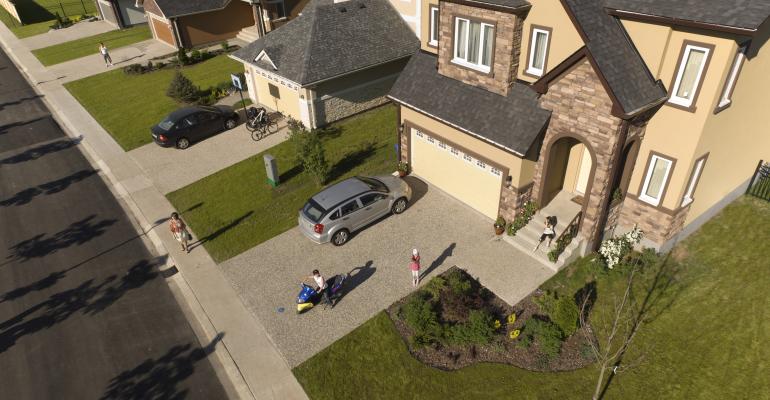The single-family rental (SFR) sector is well-positioned for a rebound once widespread economic activity resumes, according to industry experts.
“In the post-COVID-19 future, I think we will see even more people opt to rent homes instead of buying,” says Doug Brien, CEO and co-founder of Mynd Property Management, a property management firm serving the small residential sector. “In times of financial and healthcare crises, which may become more frequent, people tend to struggle paying their mortgages, making their car payments, etc. Renting is a simpler, more desirable option for many people.”
As with other sectors, single-family rentals will experience a short-term hit, but the market should be positioned for a faster market recovery and will be a better long-term play, according to recent data from John Burns Real Estate Consulting, a consulting and research company. Housing rental defaults will prove painful in the short-term, but the low supply of newly built rental homes in most markets, and capital seeking safety, yield and inflation hedge, should help SFRs recover earlier than other residential real estate asset classes, according to the report.
“Tenant selection is likely to be key going forward, looking for employment in more stable sectors such as health, government and education,” says Douglas Bendt, president of Bendt Enterprises, a consulting firm based in Boulder, Colo. “Rent guarantees may become more common as well as insurance products related to unemployment as exists for mortgage holders.”
The number of unemployment claims has reached 22 million in the last four weeks, but that has not translated to a loss of renters in the single-family rental space. Brien says his firm has not seen the renter base in the single-family rental sector decrease, as “many of our 20,000 residents are staying put in their homes.”
But tenants not paying rent remains a significant concern in the sector. Just 69 percent of renters in the multifamily space paid their rent by April 5, according to data from 13 million units published by the National Multifamily Housing Council. The number had climbed to 84 percent as of April 12. Historical numbers and found that 90 percent of renters made full or partial payments from April 1-12, 2019, and 91 percent of renters in March 1-12, 2020.
Delinquency at Mynd-managed properties nationwide were slightly ahead of those figures at nearly 11 percent, as of April 12, says Brien.
Tenants not paying rent "is a major concern not only in the SFR sector but in the entire small residential property sector,” says Brien. “The small residential sector consists of both single-family rentals and multifamily properties with fewer than 50 units. Typically, these properties are owned by small ‘mom-and-pop’ investors, not large institutional players like REITSs or publicly traded companies. Therefore, they have very little capital on reserve to cover their monthly expenses, namely rent.”
Along with a potential drop in rental revenue, another main concern for single-family rental investors are occupancy rates. In the short-term, unemployment may impact rent payments, but the outlook remains optimistic regarding occupancy rates, says Jeff Cline, executive director and principal of SVN | SFRhub Advisors, an online marketplace for single-family rental and build-for-rent investment portfolio sellers and buyers. Cline says, “as the economy recovers, demand for single-family rentals and build-for-rent will be a favorite among alternative investors with capital on the sidelines seeking refuge and stock market diversification for growth and income.”
There are about 8 million individual landlords in the U.S., or those who own between one to 10 properties. Unlike large real estate companies and REITs that own multiple rental buildings, small, so-called mom and pop landlords have neither the cash nor the credit availability to cover their costs when the rents aren’t paid. Brien says most of the owners Mynd Property Management represents rely on that monthly rental income to pay off their mortgage or debts.
“There are no bailouts currently available for small residential property owners,” says Brien. “Bigger multifamily operators who own subsidized or tax-credit housing are receiving federal assistance from HUD.”





